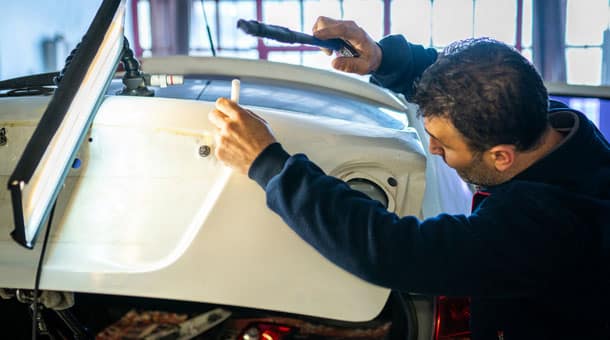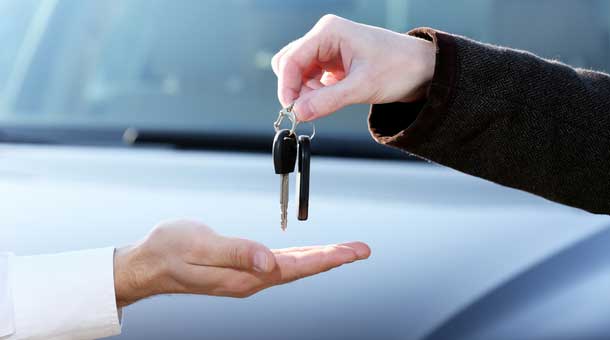Have you ever found yourself stuck in traffic, and realized that your car gear not shifting? It’s a frustrating experience that many of us have encountered.
Many factors can cause this problem, ranging from simple problems like low transmission fluid to more complex problems like transmission wear.
In this article, I’ll explain why your car gear is not working. From unexpected stops to clunky gear changes, I will uncover the reasons behind these annoyances and explore practical solutions to get you back on the road with confidence.
Reasons Behind Why My Car Gear Not Shifting?
When your car’s gear isn’t shifting properly, it can be a frustrating and concerning issue. Understanding the potential reasons behind this problem can help you address it effectively.
1: Low Transmission Fluid:
A primary cause of gear non-shifting problems is a low transmission fluid level. Transmission fluid acts as a lubricant and coolant for various system components.
When the fluid level is low, it can cause excessive lubrication and overheating, resulting in difficulty shifting gears.
2: Worn-out Clutch Plates:
Broken clutch plates in manual transmission vehicles can cause gear-shifting difficulties. The clutch system temporarily disconnects the engine from the transmission when changing gears. These clutch plates wear out over time and prevent proper engagement and disengagement of the clutch.
3: Malfunctioning Transmission Solenoid:
The transmission solenoid is responsible for regulating the flow of transmission fluid and controlling gear shifts in automatic transmissions. If the solenoid becomes faulty or fails, it can disrupt the gear shifting process, leading to erratic shifting behavior or the inability to shift gears at all.
4: Faulty Shift Cable or Linkage:
In both manual and automatic transmissions, the shift cable or linkage connects the gear shifter to the transmission. If the cable or linkage becomes damaged, misaligned, or disconnected, it can prevent the transmission from receiving the proper signals to engage the correct gear.
5: Electronic Control Module (ECM) Issues:
Modern vehicles rely on electronic control modules to manage various functions, including the transmission system.
If the ECM experiences a malfunction or software glitch, it can affect the transmission’s performance and lead to gear shifting problems.
To address gear shifting issues effectively, it’s essential to have your car inspected by a qualified mechanic.
They can perform diagnostic tests, such as checking transmission fluid levels, inspecting clutch components, and scanning for error codes in the ECM.
Based on their findings, they can recommend the necessary repairs or adjustments to restore proper gear shifting functionality to your vehicle.
Ignoring gear shifting problems can lead to further damage to the transmission system and compromise your safety on the road.
How to Identify and Fix Car Gear Shifting Troubles?
Identifying and fixing car gear shifting issue requires a systematic approach. Here’s a guide to help you tackle the issue:
1: Diagnostic Check:
Start by diagnosing the problem. Pay attention to any unusual sounds, vibrations, or warning lights associated with gear shifting. Use an OBD-II scanner to retrieve any trouble codes stored in the vehicle’s computer system.
2: Check Transmission Fluid:
Ensure the transmission fluid is at the correct level and appears clean and translucent. Low fluid levels or dirty fluid can cause shifting problems.
If the fluid is low, top it up with the manufacturer-recommended fluid type. If it’s dirty, consider flushing and replacing the fluid.
3: Inspect Clutch System (For Manual Transmission):
Check the clutch pedal for proper operation. A spongy or loose pedal could indicate air in the hydraulic system or a worn-out clutch.
Inspect the clutch fluid reservoir and lines for leaks or damage. Assess the clutch disc, pressure plate, and release bearing for signs of wear or damage. Replace any worn components as necessary.
4: Test Transmission Solenoids (For Automatic Transmission):
Use a scan tool to conduct a transmission solenoid test. This will help identify any faulty solenoids responsible for gear shifting issues. Replace malfunctioning solenoids with new ones to restore proper transmission function.
5: Inspect Transmission Linkage and Cables:
Check the transmission linkage and shift cables for signs of damage, corrosion, or misalignment.
Adjust or replace damaged linkage components or cables to ensure smooth and precise gear shifts.
6: Examine Electrical Components:
Inspect wiring harnesses, connectors, and sensors associated with the transmission system.
Repair or replace any damaged or corroded electrical components affecting transmission operation.
7: Check for Mechanical Damage:
Inspect the transmission assembly for any visible signs of mechanical damage, such as leaks, cracks, or worn-out gears.
Consult a professional mechanic or transmission specialist for a thorough inspection and repair of internal transmission components.
8: Consult Professional Help:
If you’re unable to diagnose or fix the gear shifting problem on your own, seek assistance from a qualified mechanic or transmission specialist.
They have the expertise and diagnostic tools to identify complex transmission issues and perform necessary repairs or adjustments.
By following these steps, you can effectively identify and address car gear shifting troubles, ensuring optimal performance and safety on the road.
Conclusion
When faced with a car that won’t shift gears, it’s essential to approach the problem systematically.
By checking transmission fluid levels, inspecting the clutch (for manual transmission), testing transmission solenoids (for automatic transmission), and examining transmission linkage and cables, you can identify potential issues and take appropriate action.
If troubleshooting steps don’t resolve the problem, seeking professional assistance from a qualified mechanic is advisable.
Remember, addressing gear shifting issues promptly ensures safe and smooth driving experiences in the long run.
FAQs
What people ask about gear shifting.
Can a faulty clutch cause gear shifting problems in an automatic transmission car?
No, automatic transmission cars don’t have a clutch pedal like manual transmissions.
Gear shifting issues in automatic cars are usually related to transmission solenoids, fluid levels, or mechanical components.
How long does it take to fix gear shifting problems in a car?
The time required for repairs depends on the complexity of the issue. Minor problems like low fluid levels or simple adjustments may be fixed quickly, while more significant issues might take several hours or even days to resolve.
Is it safe to continue driving if my car experiences gear shifting issues?
It’s not recommended to drive your car if you’re experiencing gear shifting problems, especially if the shifts are rough or delayed.
Continuing to drive could worsen the issue and potentially lead to more extensive damage to the transmission system. It’s best to have the problem diagnosed and repaired as soon as possible.
Can driving habits affect gear shifting performance?
Yes, aggressive driving, such as abrupt acceleration or frequent gear changes, can put stress on the transmission system and contribute to premature wear and shifting problems.
Are gear shifting issues covered under warranty?
It depends on the warranty coverage and the specific terms and conditions outlined by the manufacturer. Some warranties may cover transmission-related issues within a certain mileage or time frame.
What should I do if my car’s gear shifting problem persists after repairs?
If the issue persists after repairs, revisit the mechanic to reevaluate the problem. It’s possible that additional diagnostic steps or repairs may be necessary to address underlying issues causing the gear shifting problem.




